“Choices – good, bad, or highly amusing – are laid bare in a retrospective gaze.” – Joshua Munchow, 2019
What a great quote to begin with; clearly the speaker was a genius! But in all seriousness, a retrospective has become a relatively common way of showing an artist’s work and how his or her style developed over time. It is an incredibly useful tool to illustrate technique changes and style fluctuations throughout a long career.
For many artists, the changes are subtle; a new stroke technique here, a change to different oils there, perhaps a sudden use of certain imagery as the artist focuses on something specific to the context of life or society.
But some artists change dramatically throughout their careers, moving from one style and format to entirely different ones by the end. This is especially true when an artist is crucial to the invention of a completely new artistic style. Pablo Picasso is one of the best examples for a retrospective that shows dramatic change over the length of a career.
Picasso was fantastic at realism early on and did many portraits showcasing his abilities. But over time his style shifted as he moved to more and more geometric expressions of shape, eventually working almost exclusively with Cubism. A retrospective at the Museum of Modern Art in New York City in 1939 provided a good illustration of this shift, helping us understand the gradual change of a new art form.
One thing rarely seen in retrospectives is an artist’s attempt at blending early and later work into a new piece, something that would be a synthesis of the career and everything that went into it. I’m not even sure if many artists undertake such a project, but it could be a very interesting practice for a better understanding of their own careers.
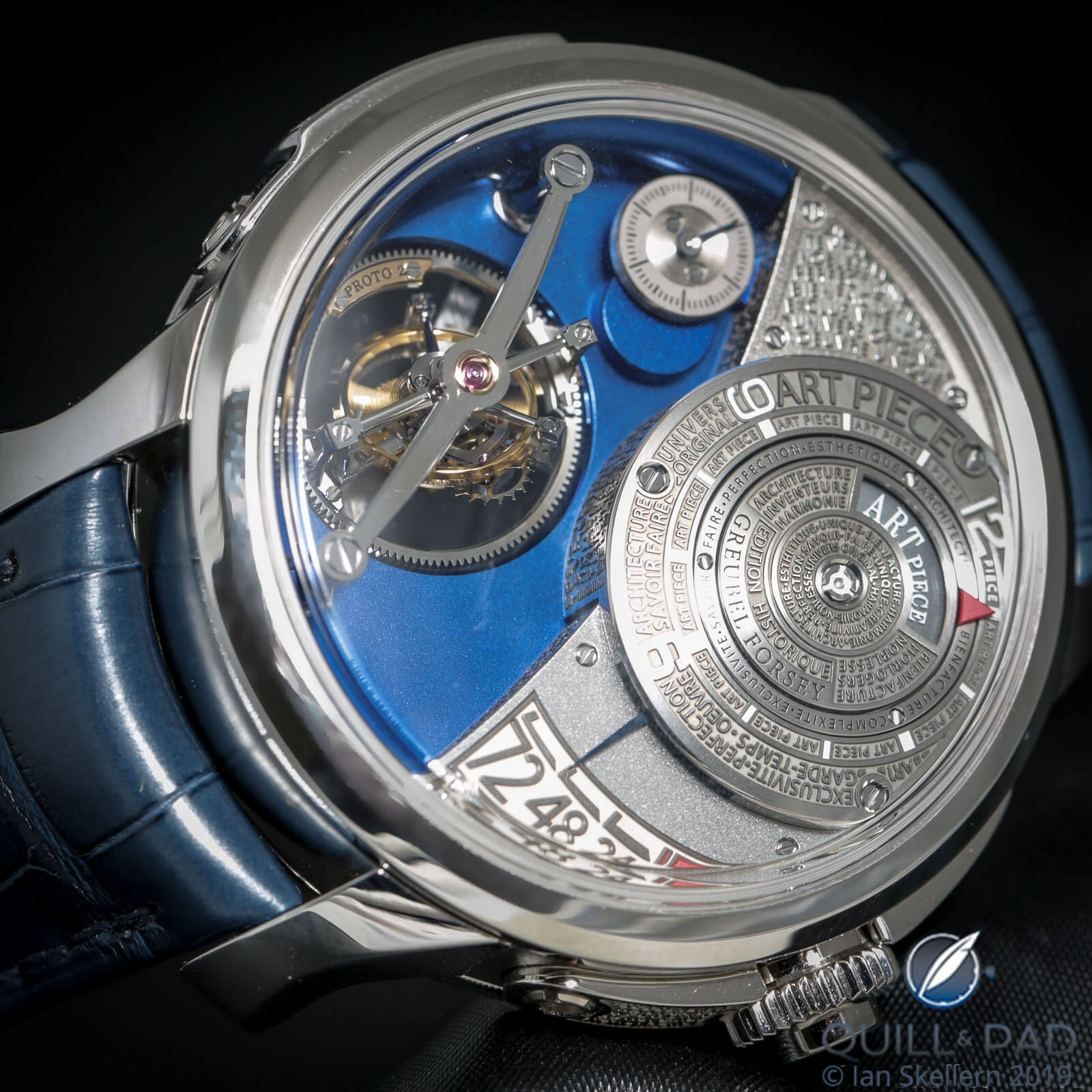
Greubel Forsey Art Piece Edition Historique
Luckily for us, in watches we have people and brands that do look back on what has led them to where they are and try to incorporate the past and the present into a current work. The latest awesome example of this is Greubel Forsey with its Art Piece Edition Historique, a true coalescence of a decade and a half of horological exploration into something stunningly simple and complicated all at once.
Art Piece Edition Historique: the essence of Greubel Forsey
The Art Piece Edition Historique takes some of the best details from the past 15 years of Greubel Forsey and skillfully combines them into a timepiece that has a goal of displaying ideas and history more than the time. It does display the time, but only casually, and an exact reading requires interaction with the watch by pressing the button in the crown, something inherent to the idea of the Art Piece line.
This watch downgrades the time to a secondary feature. In this version, the hours are always on display but not necessarily highlighted thanks to an extreme use of etching where hundreds of words (the philosophy of Greubel Forsey) covers most of the movement. A small window with words “Art Piece” etched into it slides out of the way to uncover the minutes, providing the user with access to the time but keeping the focus on the aesthetic of the combined details.
The main design takes huge cues from Harry Winston’s Opus 6, with the angled dial cutaway and prominent placement of the double tourbillon 30° representing the bulk of the layout. This configuration inspired many Greubel Forsey pieces over the years, so the Opus 6 can safely be named as the origination of the design.
The double tourbillon regulator inclined at 30° is the most up-to-date version of the mechanism, following the strong architectural codes first seen in Invention Piece 1, whose mechanism was invented and developed to improve chronometric precision or usability. A large cutaway adds incredible depth, something very familiar on watches from Greubel Forsey.
The rest of the movement is largely covered thanks to what looks like a massive block of engraved steel, but which is actually multiple plates screwed to the movement architecture dramatizing the highly mechanical look characteristic of a Greubel Forsey piece.
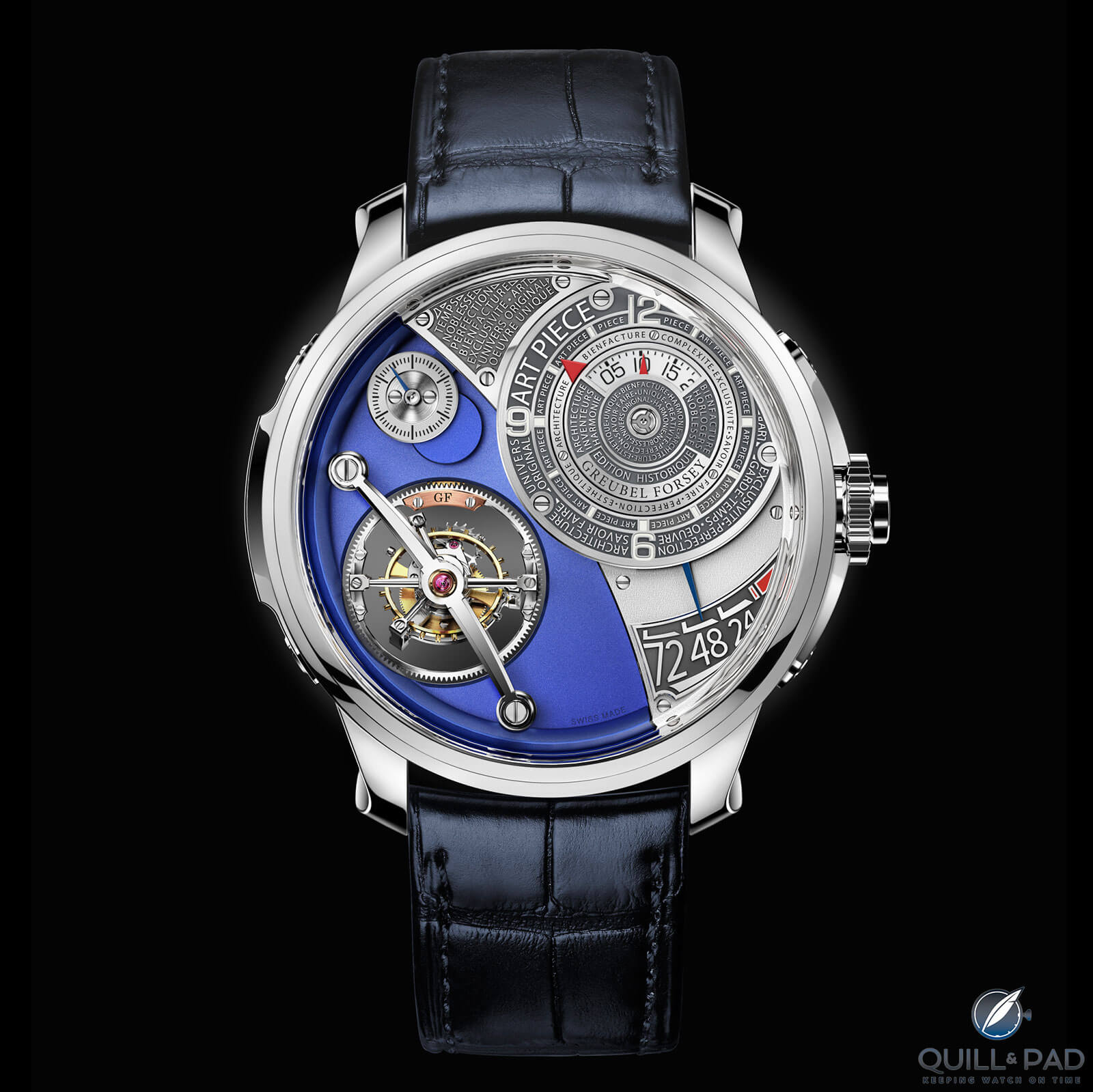
Greubel Forsey Art Piece Edition Historique
The time display is arranged in a set of concentric rings, a design that has been used and reimagined repeatedly across the Invention Piece, Art Piece, Quantième Perpétuel à Équation, and Quadruple Tourbillon Secret lines. That has always been a detail that sets Greubel Forsey apart, even if it might feel busy. But in the context of the brand’s designs, it feels like a natural extension of the mechanical philosophy.
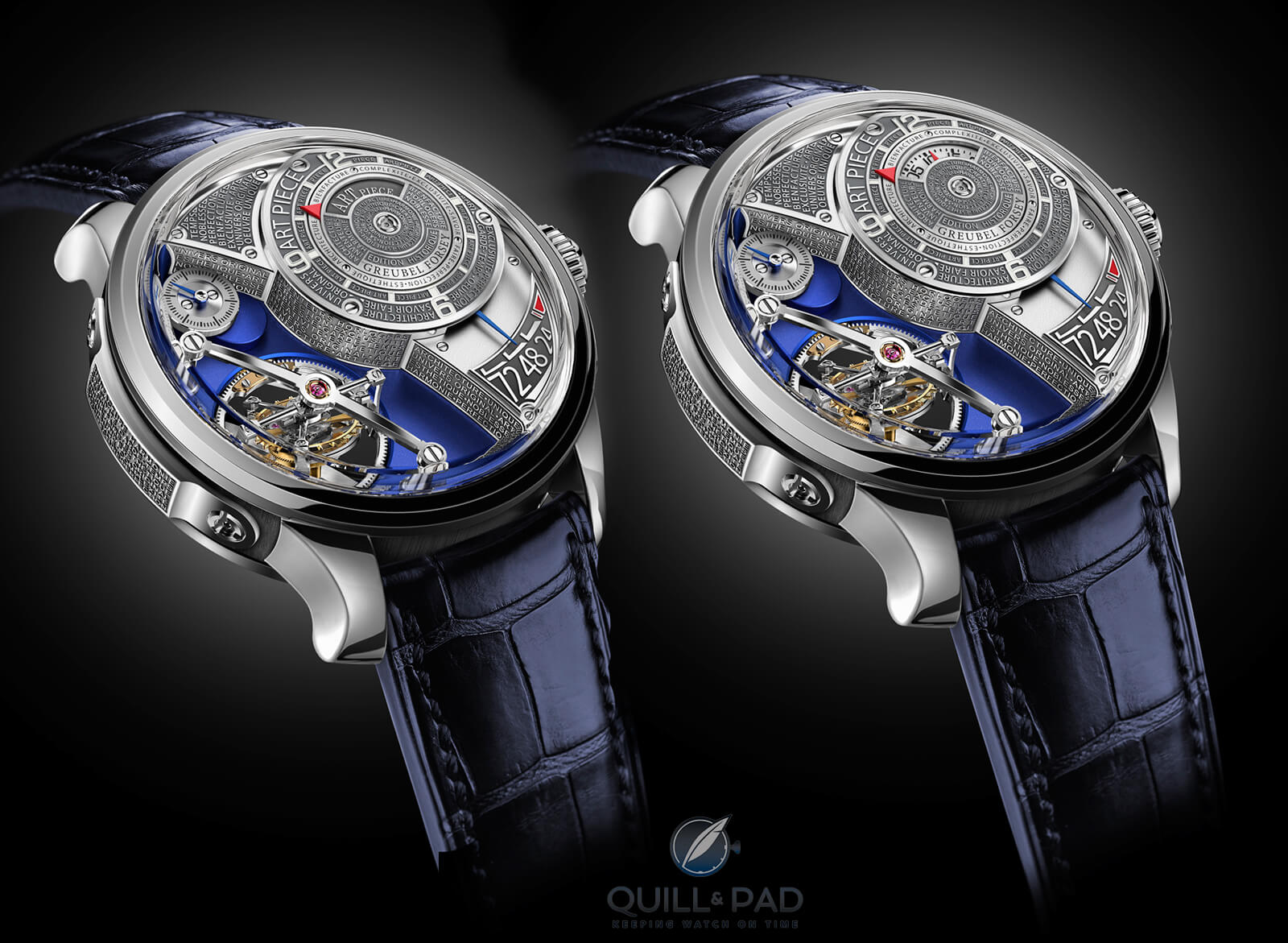
Spot the difference: on the left the minute display of the Greubel Forsey Art Piece Edition Historique is closed with only the hour indicator visible at 10 o’clock, on the right the minute display is open and pointing to 10; the time is 10:10
A small running seconds dial is the only thing aside from the double tourbillon 30° within the dial cutout, adding a bit of flair but also keeping the focus on the tourbillon architecture. That subdial is also the only visual indication that the double tourbillon 30° is connected to anything as it sits in a porthole in the cutaway and seems completely separate from the movement (of which nothing is actually visible).
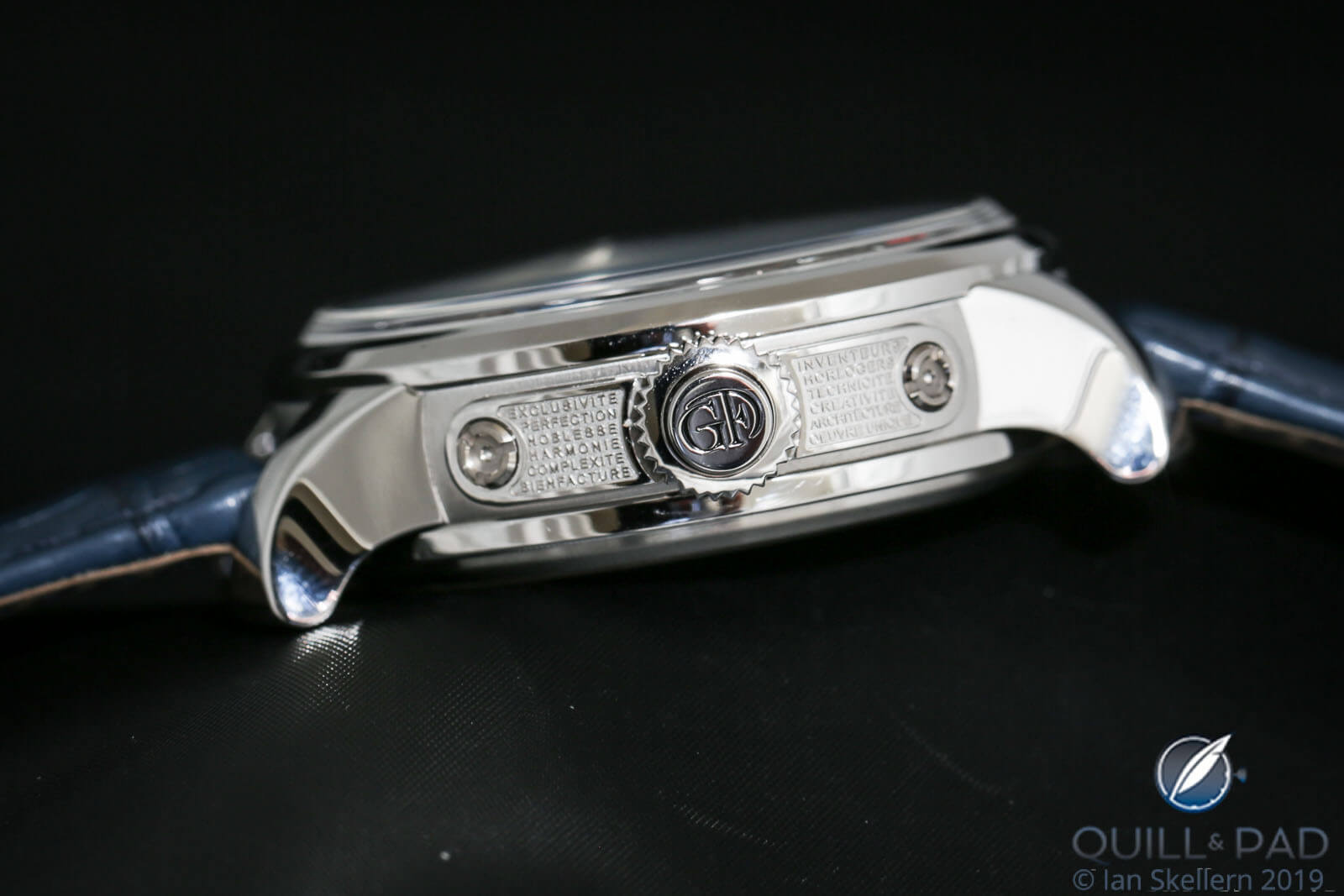
Engraved crown and case band of the Greubel Forsey Art Piece Edition
The separation with no visual connection (aside from a few tiny teeth peeking out from under the blue plate and meshing with the outer tourbillon ring) is meant to emphasize the beauty of the mechanics that are highlighted and remove the aspect of time and function of the object as a whole.
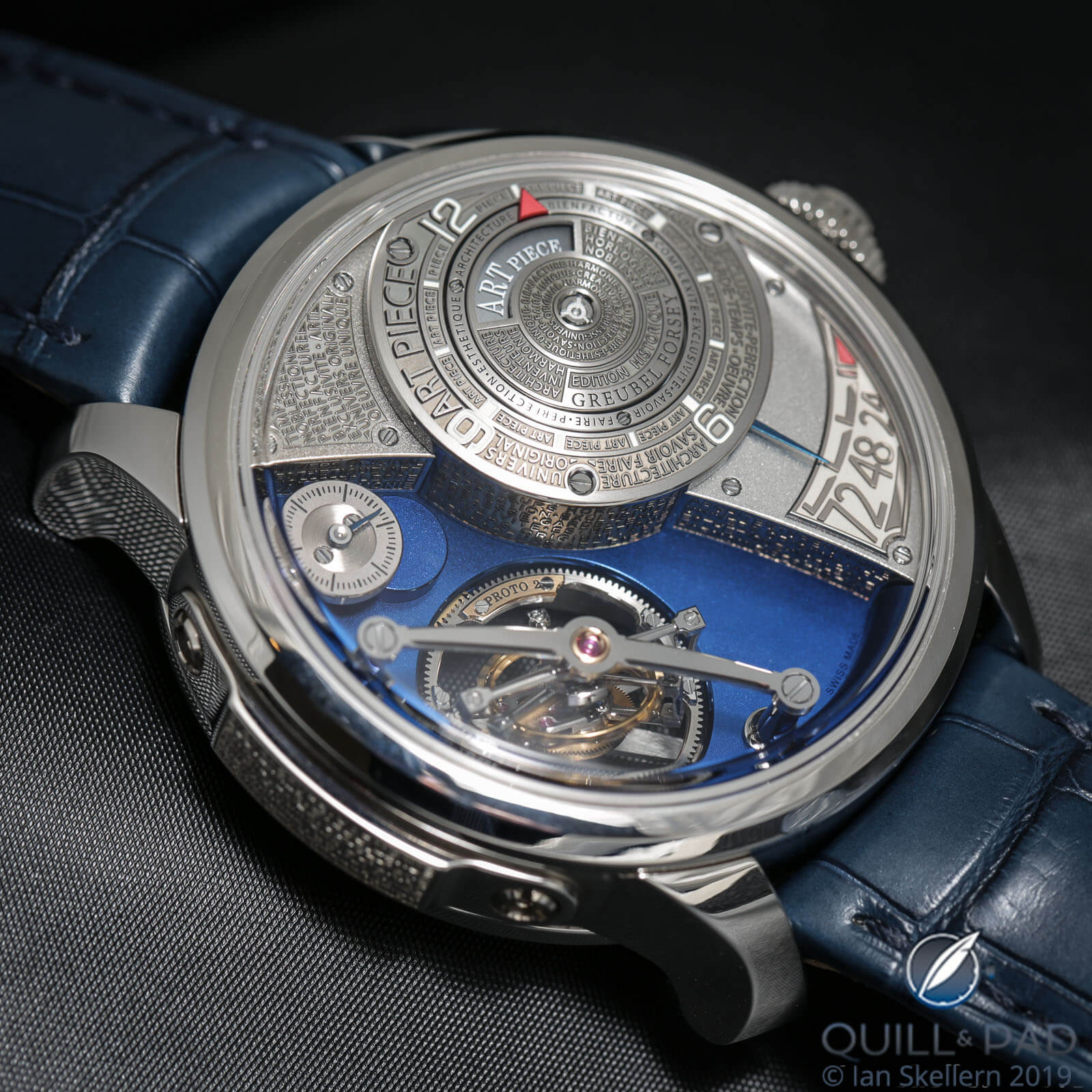
Greubel Forsey Art Piece Edition Historique
Everything that actually makes the movement function, outside of the tourbillon and small seconds dial, is encapsulated in the monolithic text-covered block to the right. And with the user-activated window to see the whole time display hiding the full functionality of the watch, its aesthetic is what truly shines.
There is a power reserve display, but even that doesn’t necessarily feel connected to the marvelous double tourbillon 30° in the massive cutaway on the left. The unseen force pushing the spinning wonder is second to the wonder itself – kind of like the Wizard of Oz, a great green floating head that isn’t tied to the human world unless you peer behind the curtain to witness the mechanism.
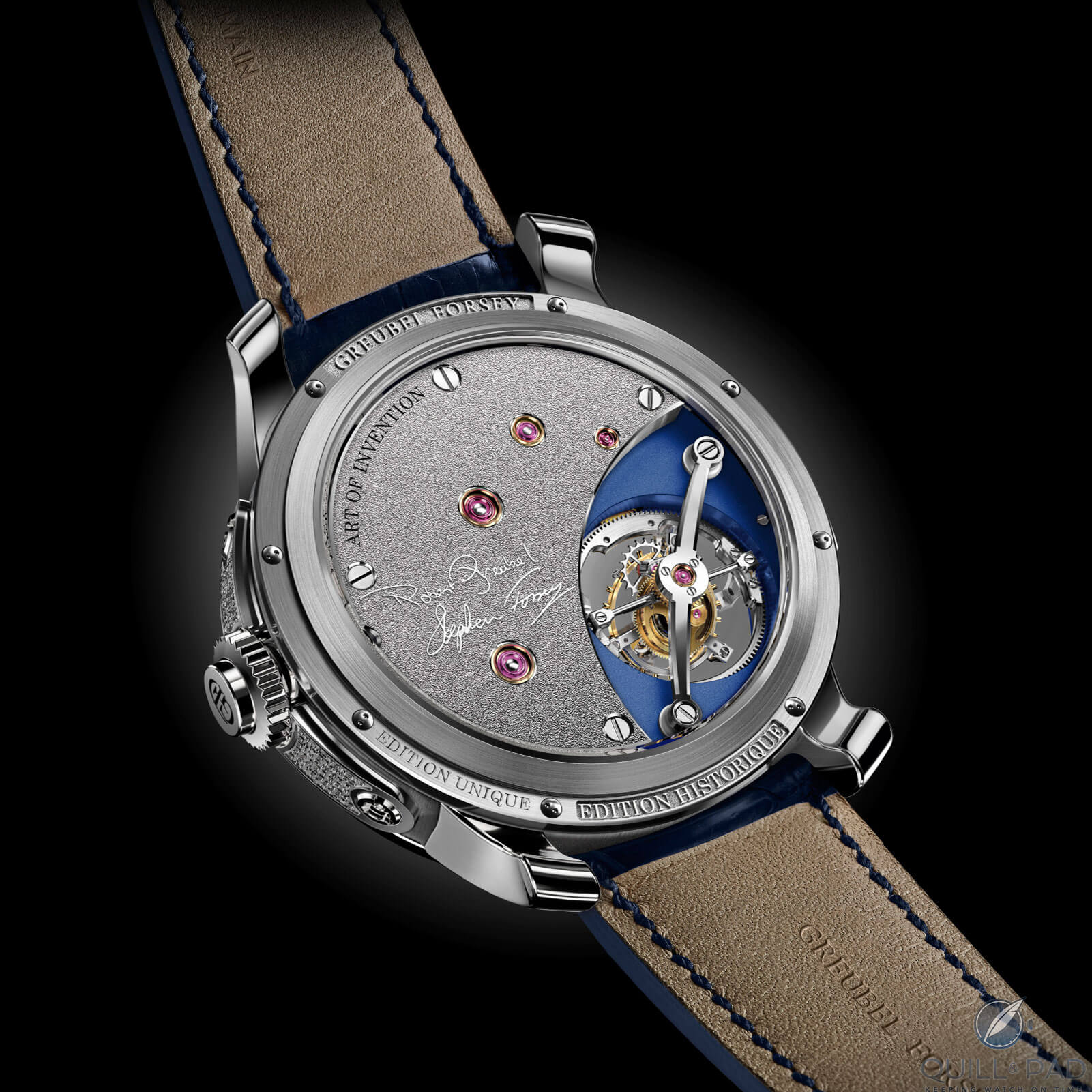
Back of the Greubel Forsey Art Piece Edition Historique
The back of the Art Piece Edition Historique continues this misdirection with absolutely no exposed mechanism aside from the rear of the double tourbillon 30°. The rear plate is solid save the periodic gold chatons and screw heads, making sure that at no time is attention drawn away from the whirling mechanism. The entire piece is created to showcase style, aesthetic, and a single aspect of mechanics – the double tourbillon 30°, which is the entire reason Greubel Forsey is the success it is.
The road that paved Greubel Forsey’s way to the Art Piece Historique
It all began in 2004 when Greubel Forsey launched its first watch, the Double Tourbillon 30°, which was an instant hit (as far as highly limited, very expensive watches go).
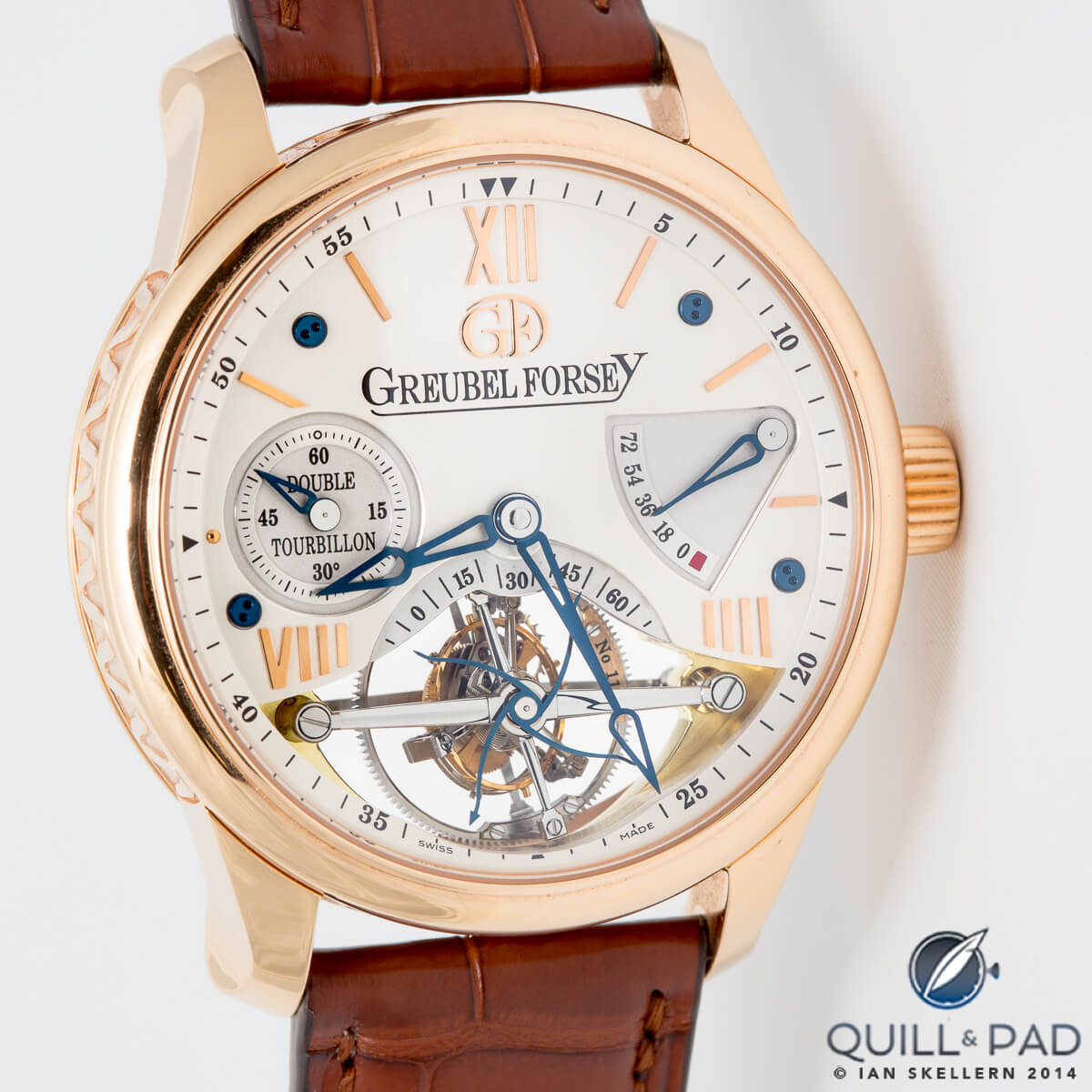
The timepiece that started it all for Greubel Forsey: the Double Tourbillon 30°
Things went so well, in fact, that within a year the founding duo Robert Greubel and Stephen Forsey were tapped to create the Harry Winston Opus 6, which was released in 2006.
This extremely avant-garde design dramatically shifted the future for the brand, as the original Double Tourbillon 30° would eventually become tame by Greubel Forsey standards as a fairly traditionally styled watch aside from the double tourbillon on display.
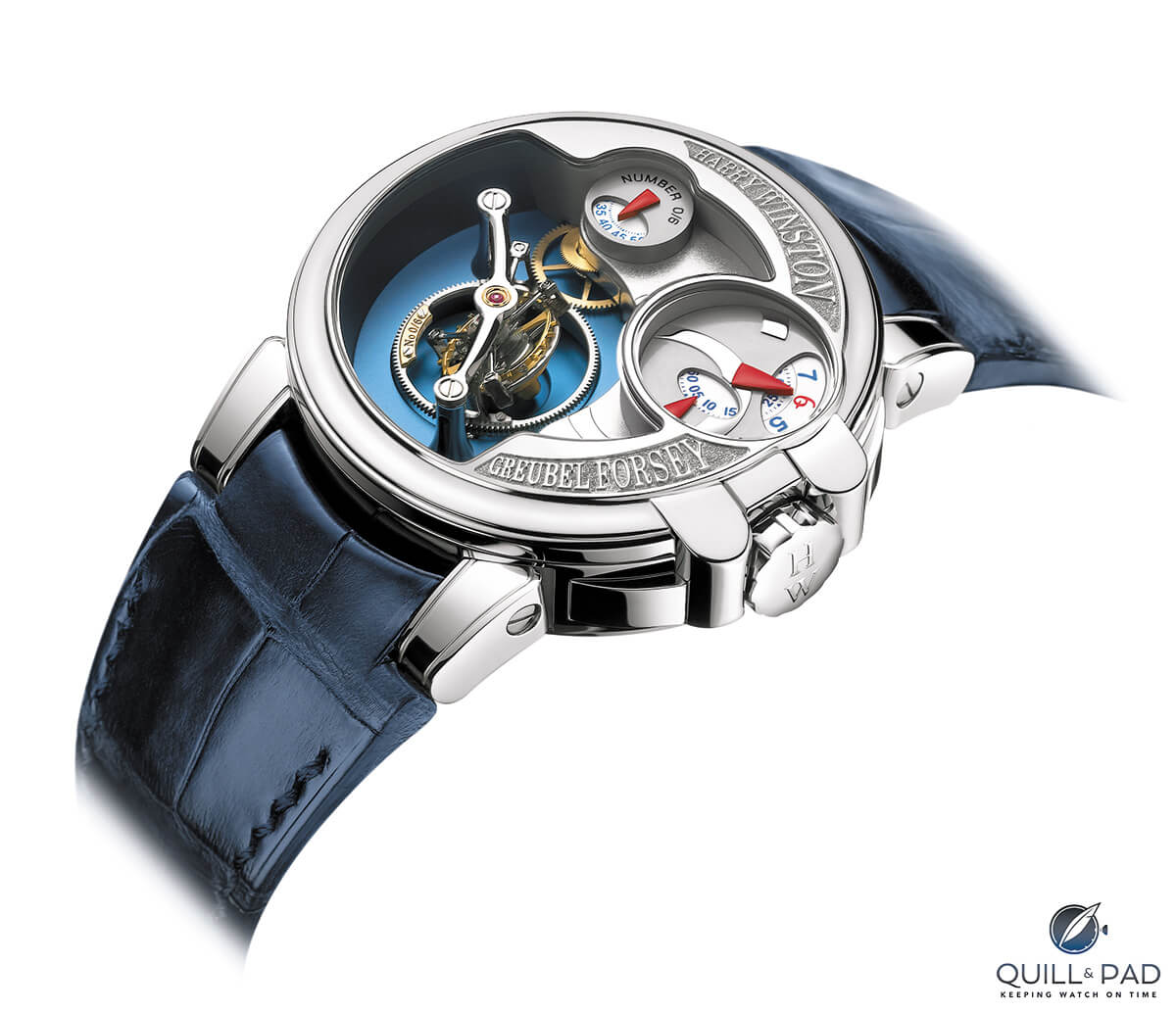
Harry Winston Opus 6 by Greubel Forsey
The Opus 6 was decidedly untraditional, and while the design of Greubel Forsey watches didn’t follow every design cue of the Opus 6 after that, the advent of that watch introduced key design cues to the Greubel Forsey aesthetic like the angled dial cutaway, deep multilevel dials, subdials that hang over the bezel, and large architecturally inspired pillars and bridges.
These were doubled down on with the Invention Piece 1 released in 2007 (one of the most groundbreaking haute horlogerie designs in modern history), the Invention Piece 3 released in 2009, and the Invention Piece 2 released in 2011. And, yes, these were released chronologically out of order.
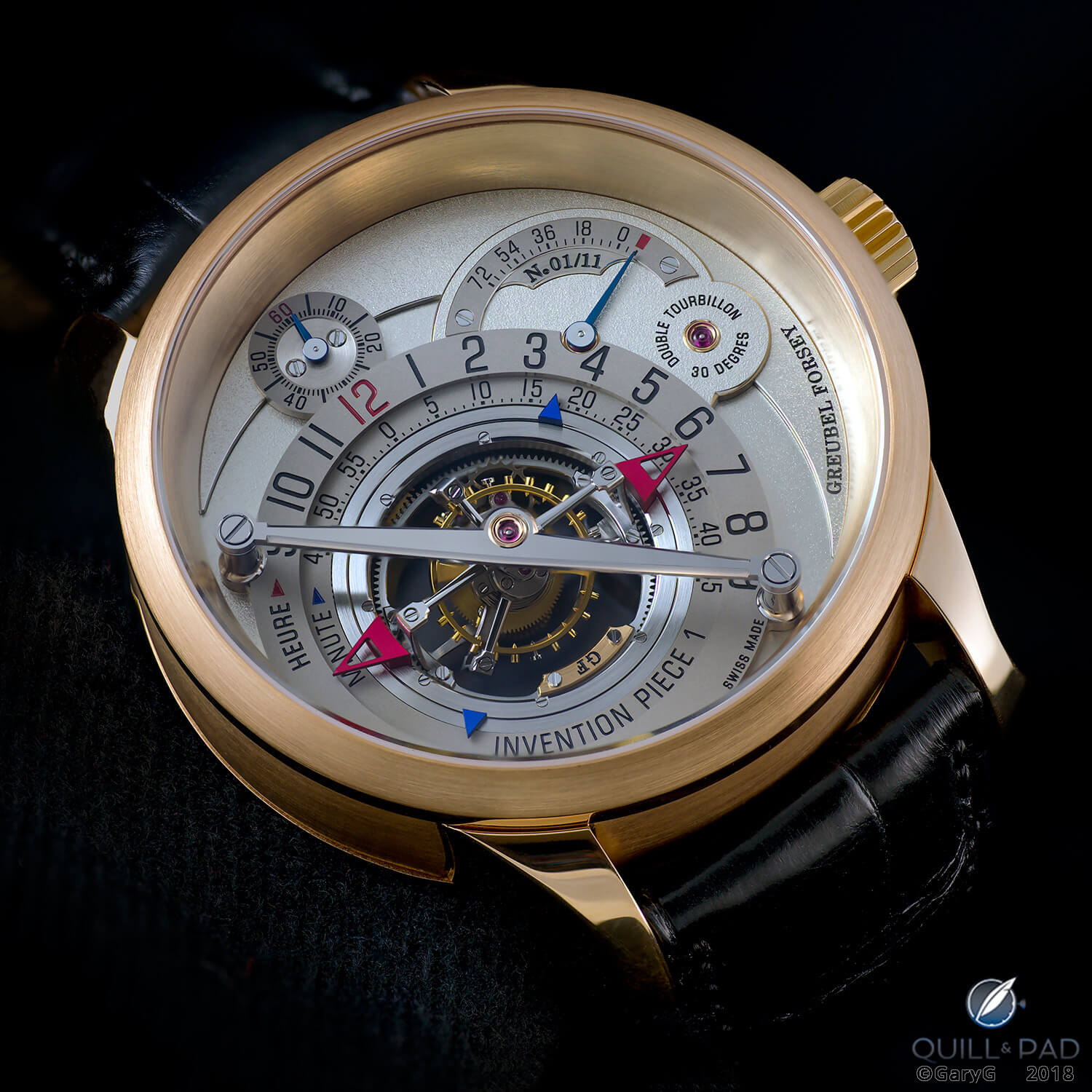
Greubel Forsey Invention Piece 1
The Invention Pieces pushed the boundaries of design for the brand. And thanks to their popularity, it didn’t stop there. Other amazing models followed, including in 2013 the first Art Piece with a micro-sculpture by British artist Willard Wigan. Even more design elements were introduced, like the hidden time revealed by the push of a button. Other Art Piece models followed.
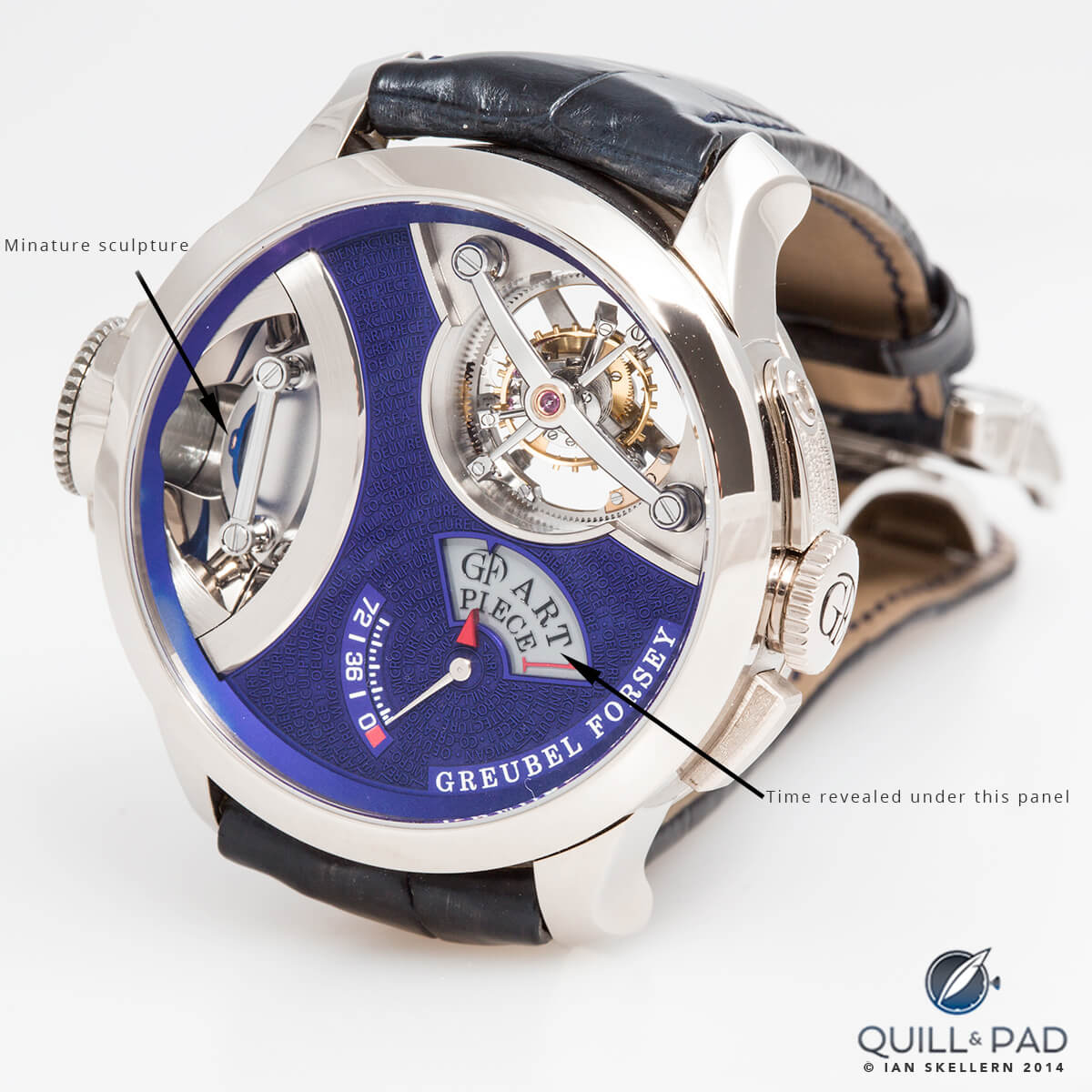
Art Piece 1 by Robert Greubel and Stephen Forsey in collaboration with micro-sculptor Willard Wigan
By this point, the assortment of design details available for Greubel Forsey to play with had grown tremendously, and so it gave the brand the perfect chance for reimagination and combination. The result is this Art Piece Edition Historique, technically the final planned Art Piece and a culmination of the concept and of the brand’s design details thus far.
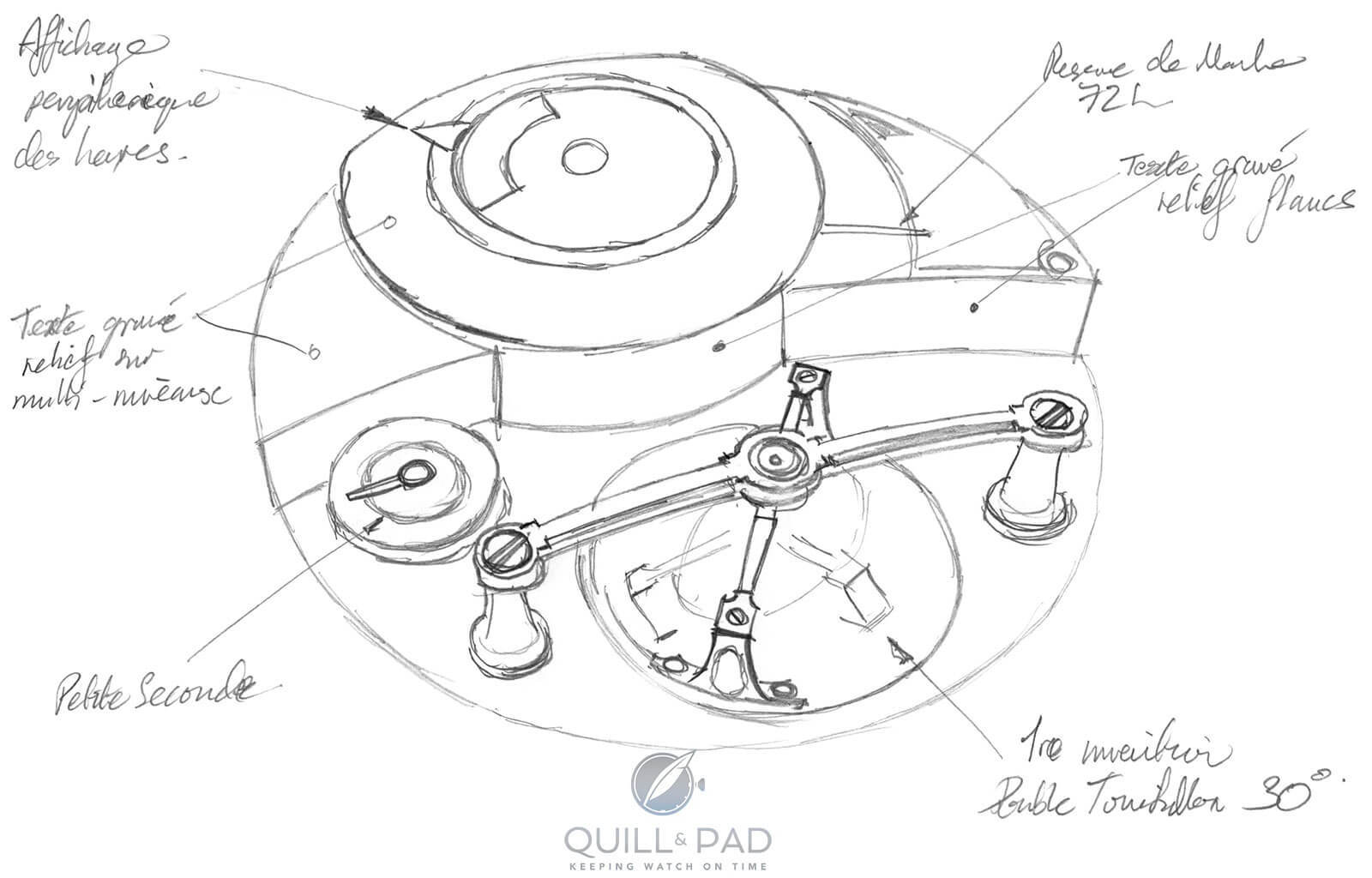
Movement architecture sketch of the Greubel Forsey Art Piece Edition Historique
Art Piece Edition Historique encapsulates nearly everything that has made Greubel Foresy distinctive, with only a few details, like bulbous subdials overlapping the bezel, missing the cut. Every aspect of the watch screams Greubel Forsey, and no person could mistake it for anything else.
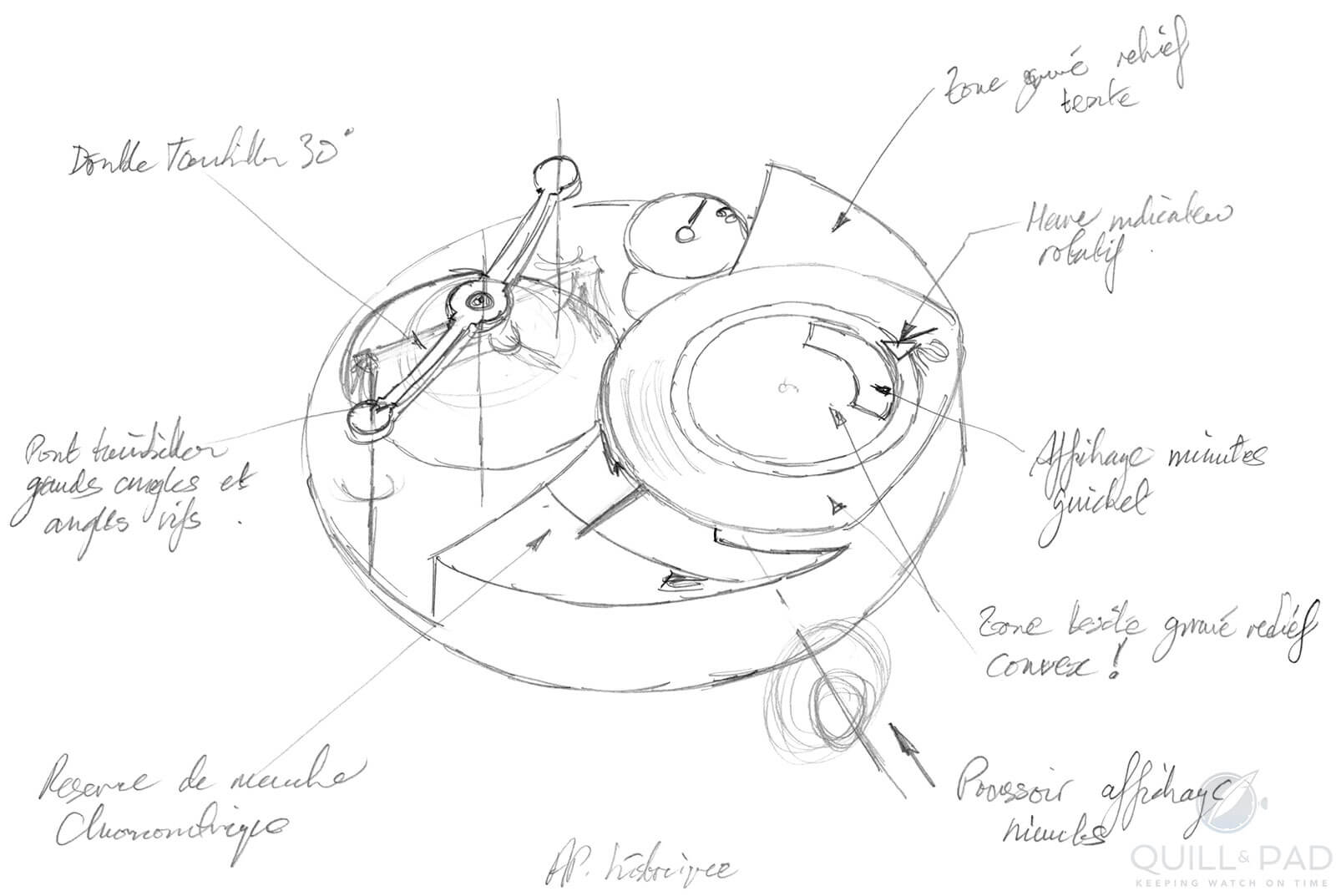
Movement architecture sketch of the Greubel Forsey Art Piece Edition Historique
As the Art Piece Edition Historique is somewhat of a retrospective on design and mechanics at Greubel Forsey, its release could mark a turning point for the brand, after which it may seek to try new ideas after wrapping up a bunch of original pathways.
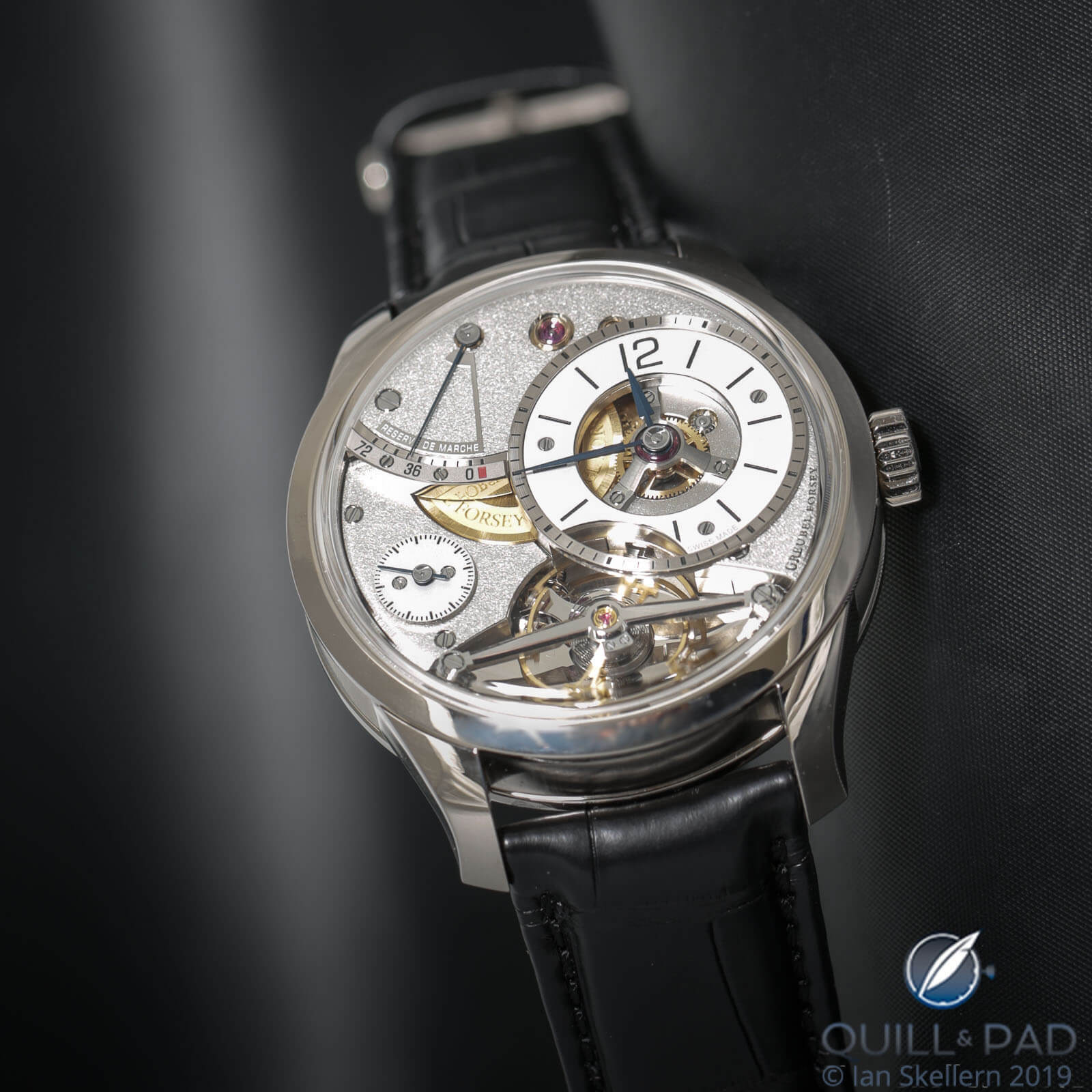
Greubel Forsey Balancier Contemporain
Another 2019 SIHH release, the Balancier Contemporain, is a smaller and more wearable version of the Greubel Forsey mechanics and aesthetic. And it makes clear that the brand is thinking about what it is, where it has come from, and how it should move forward as it approaches its twentieth anniversary in a few years.
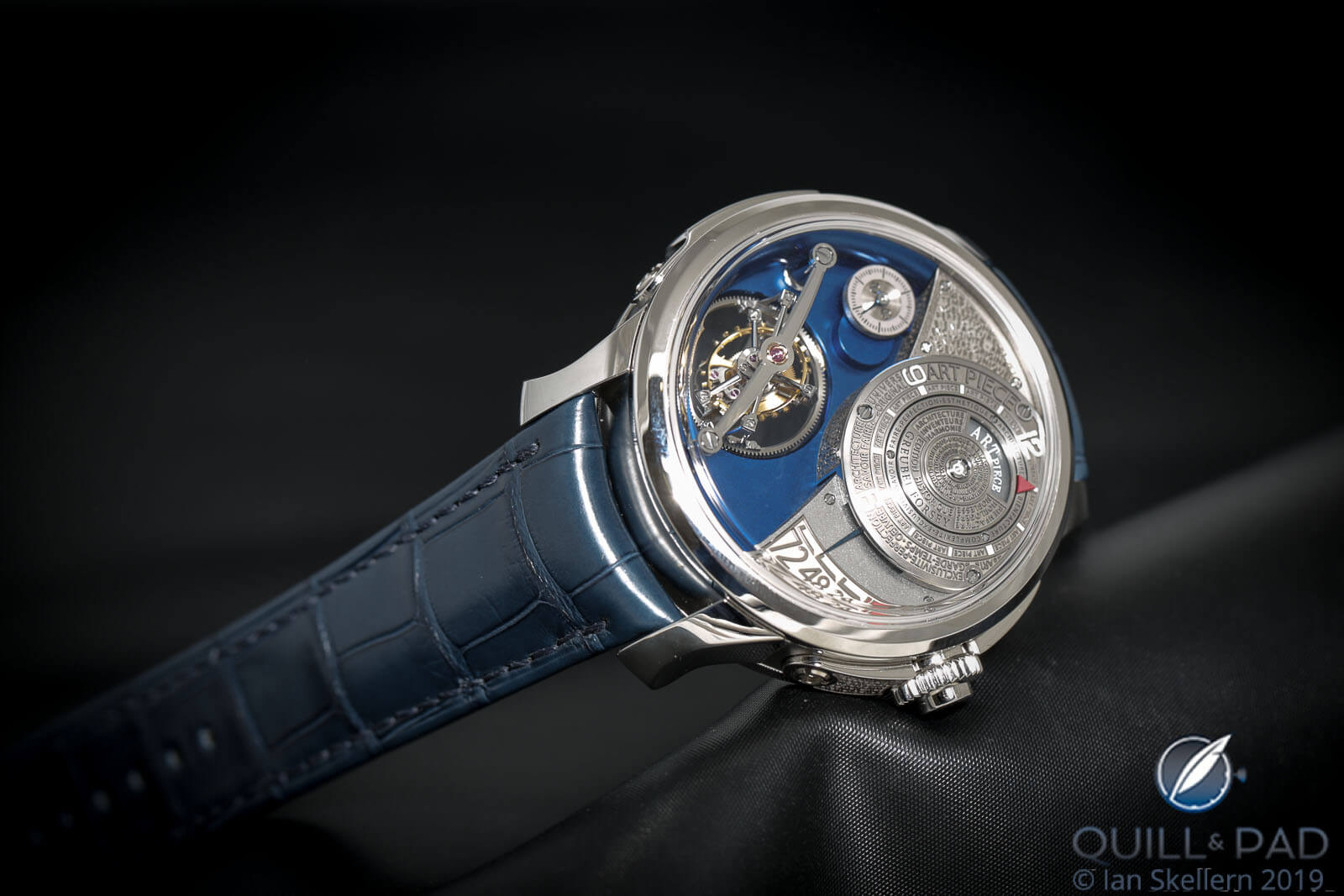
Greubel Forsey Art Piece Edition Historique
One thing is certain, the brand is definitely doing things right.
On to the breakdown!
- Wowza Factor * 9.89 Any Greubel Forsey is risking breaking the scale, but add in all that engraving and the awesomely highlighted double tourbillon 30° and look out!
- Late Night Lust Appeal * 105.25» 1,032.150m/s2 What a truly powerful experience this piece will provide you as it keeps you up into the wee hours of the morning for weeks!
- M.G.R. * 67.4 Even though most of the movement isn’t visible like in other pieces, the geekiness of it cannot be understated!
- Added-Functionitis * Mild While it only has a power reserve aside from the time display, it is a strong showing regardless. I would suggest children’s strength Gotta-HAVE-That cream for the startlingly simple case of added-functionitis!
- Ouch Outline * 11.7 Hyperextending your knee at a trampoline park! A man can enjoy some time jumping around on some trampolines just as much as the next kid. One must never forget one’s age, however. Still, I would gladly hurt another joint if it meant getting this on my wrist!
- Mermaid Moment * A press of a button! Press the button on the crown to display the minutes and it’s all over. Next thing you know, it’s chrysanthemums and ivory in the park with 150 guests!
- Awesome Total * 940 Multiply the number of pieces in the limited edition (33) with the water resistance in meters (30) and subtract the number of jewels in the movement (50) for a masterfully assembled awesome total!
For more information, please visit www.greubelforsey.com/en/collection/art-piece-edition-historique.
Quick Facts Greubel Forsey Art Piece Edition Historique
Case: 44 x 15.95 mm, platinum
Movement: manual winding Greubel Forsey caliber with 30° inclined double tourbillon, dual serially operating fast-rotating spring barrels, variable inertia balance, 21,600/3 Hz frequency, 72-hour power reserve
Functions: hours, minutes on demand, seconds; power reserve
Limitation: 33 pieces total, 11 in platinum
Price: CHF 555,000
*This story was first published on January 27, 2019 at Greubel Forsey Art Piece Edition Historique: A Brand Aesthetic Retrospective In One Wristwatch.
You may also enjoy:
The Harry Winston Opus Series: A Complete Overview From Opus 1 Through Opus 13
The Greubel Forsey Double Tourbillon 30° Technique: What’s Friction Got To Do, Got To Do With It!?
Leave a Reply
Want to join the discussion?Feel free to contribute!





















































Excellent article, thank you for the great story!